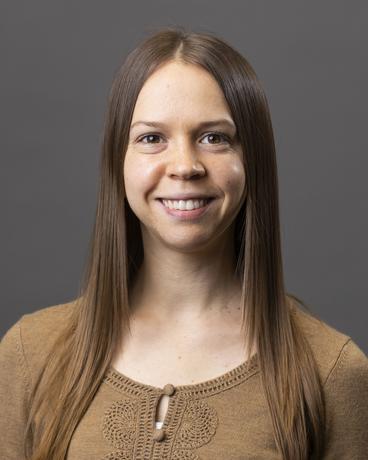Beginning a new career is a major step for any recent college graduate. Add to that a global pandemic and moving to a new city, sight unseen.
When Allison Byrd joined the NRRI team in the spring of 2020, she was immediately tasked with helping to set up the new research lab focused on environmental contamination under the leadership of Bridget Ulrich.
And Byrd turned from her academic studies of salt-water oceans to the fresh waters of the Great Lakes.
That’s a lot of “new.”
Byrd received her master’s degree from the University of Connecticut in oceanography in August 2019, with an emphasis in marine chemistry. But she was excited to apply her skills toward research projects in the fresh waters of Minnesota and the Great Lakes. Her position at NRRI as a Research Environmental Chemist is also giving her the opportunity to dig deeper into environmental organic chemistry.
“Before I came to NRRI my focus was on carbon and nutrients in coastal estuaries, but I’ve always been interested in organic contaminants,” said Byrd. “Everything I do here increases my knowledge in that area and I’m becoming more proficient in the related laboratory analyses.”
Her group is part of a multidisciplinary team of dozens of researchers contributing to the Great Lakes Sediment Surveillance Program, funded by the U.S. Environmental Protection Agency. Their role in the project is to analyze hundreds of legacy and emerging contaminants in the sediments of the entire Great Lakes system to better understand their presence and what controls their movement.
“It’s exciting because the information will be used to assess ecosystem health and help in directing future management decisions for these important freshwater resources,” she said. “We will help ensure these natural resources are protected and available for future generations.”
NRRI invested heavily in new, cutting-edge instrumentation for the Environmental Chemistry Lab this past year, putting them at the forefront of efforts to analyze contaminants in the environment. Byrd has enjoyed the learning curve involved to operate these complex instruments and help develop the methodologies needed for the Surveillance Program. This differentiating instrumentation is central to the work in the Lab and has also helped the researchers form collaborations with other labs at NRRI, across the UMN system and with collaborators across the country.
Collaborations

Byrd was also tasked with setting up methods to extract and analyze microcystins – toxins produced by cyanobacteria – which can cause harm to humans and animals. This information will be used by the Lake and Stream Ecosystem Ecology Lab at NRRI and the Geomicrobiology and Organic Chemistry Labs at the Large Lakes Observatory to develop predictive models to determine when algal blooms will become toxic.
The Environmental Chemistry team is also working with researchers in NRRI’s Materials and Bioeconomy Group, along with researchers from the University’s Twin Cities campus, to produce biochars and investigate their potential to remove pollutants from stormwater.
Supply Chain Challenges
Helping to get a new lab up and running with so many new projects and purchasing the necessary laboratory items, along with training additional help, have been important roles for Byrd. But pandemic-related supply chain shortages and price increases have added challenges.
“We’ve really relied on our Purchasing Specialist Tammy Thomasson-Erhart to find the items we need in a timely manner and for the best prices,” said Byrd. “Like all of our Central Support staff at NRRI, she’s always kind and encouraging.”
Down Time
With all the new stuff in her life, Byrd used her extra pandemic time at home to refamiliarize herself with an old friend – her sewing machine.
“My grandmother taught me to sew and helped me make small projects as I was growing up,” she said. “I’ve been enjoying the time and space to sew again while expanding my skills.”
She also enjoys exploring the North Shore with short day trips and camping trips. “I’ve even started liking winter more since moving here,” she laughed.
